"Poetic and demure ... A thought-provoking film about the cities needs and wishes." (Claudia Engelhardt, Filmmuseum Munich)
"An exciting philosophical essay film on housing." (filmjournalisten.de)
"And truly, this film leaves no-one untouched." (Regine Geibel, münchenarchitektur)
"The Wounded Brick is an excellent example that cinema is more than revealing the mostly dark sides of the world we live in but also offering an attitude to this world. The Wounded Brick is a film you can literally indwell." (Rüdiger Tomczak, shomingeki)
★ ★ ★ Presented and acknowledged in Homeland, Portugals official representation at the 2014 Venice Architecture Biennale
★ ★ ★ Lisbon Architecture Triennale 2013
★ ★ ★ VII Istanbul International Architecture and Urban Films Festival 2013
★ ★ ★ VII Festival Internationale del Film di Roma 2013
The Wounded Brick: Upcoming screenings
If you are interested in hosting a screening in your town please contact us.
More screenings to be announced soon.
The Wounded Brick: Trailer
The Wounded Brick: Short Synopsis
„The Wounded Brick“ is a cinematic essay on the visions, hopes and failures while searching for humane housing in the face of economic and political interest. Filmmakers Sue-Alice Okukubo and Eduard Zorzenoni encounter architects, urban planners, sociologists and victims of the 2009 earthquake in Abruzzo, Italy.
Interviews with Vittorio Gregotti, Stefano Boeri, Lorenzo Romito, Vezio de Lucia, Friedrich von Borries, Hartmut Häussermann, Gottfried Böhm, Pauhof Architects, Harry Glück and citizens of L`Aquila merge associatively into a poetic reflection on: Who owns the city? What does housing mean?
The Wounded Brick: Architects
in alphabetical order
Gottfried Böhm, Cologne, Germany
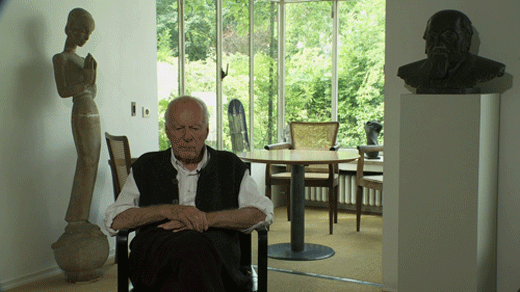
“A building is part of a person’s space and dignity and its appearance should reflect its contents and functions.”
Stefano Boeri, Milan, Italy
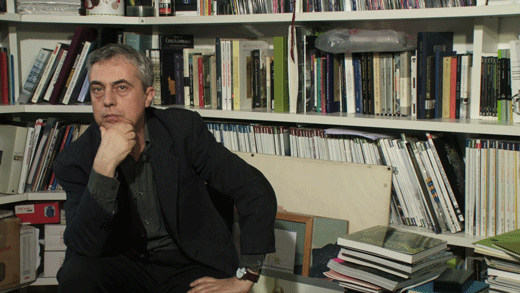
“A new policy for the city means to understand nature in the city as an area that needs to be re-dimensioned.”
Friedrich von Borries, Berlin, Germany
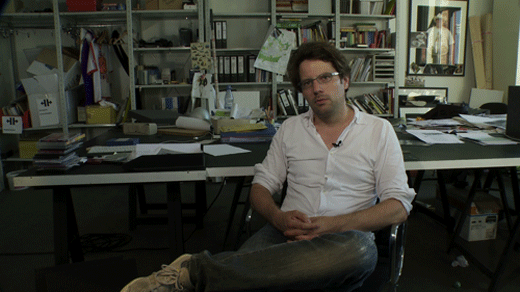
“Questions of temporary housing will be much more important in the future. There need to be buffer areas to help free yourself from the rigid everyday capitalistic life. Areas you can appropriate for your needs and requirements.”
Harry Glück, Vienna, Austria
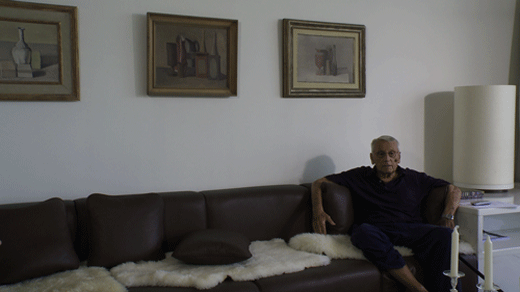
„I doubt whether large scale housings will increase in the next decades, especially to an extent that will make it possible for nature to return to the cities, to keep traffic in to stem traffic flow, to replace one-family houses as ideal.“
Vittorio Gregotti, Milan, Italy
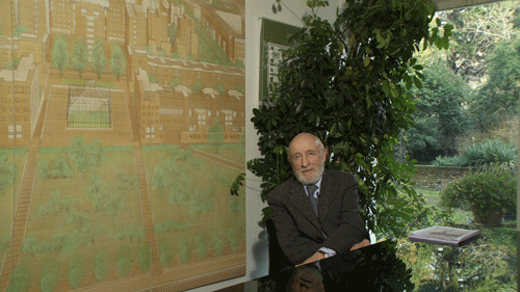
“Today, to think of living is, solely on thinking of urban living. Not because the majority of the global population lives in cities, but because the form that we associate with “living” has become that of the city”
Pauhof (Michael Hofstätter, Wolfgang Pauzenberger), Vienna, Austria
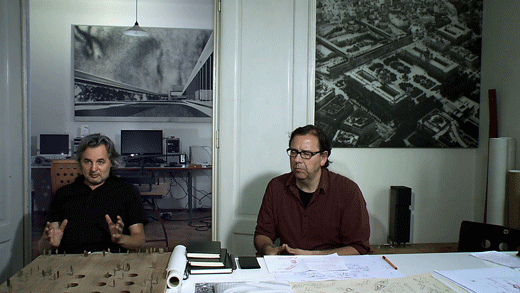
“There are practically only consumption areas such as shopping centers. There is no city space that is open to all social groups for free use”
Lorenzo Romito, Rome, Italy
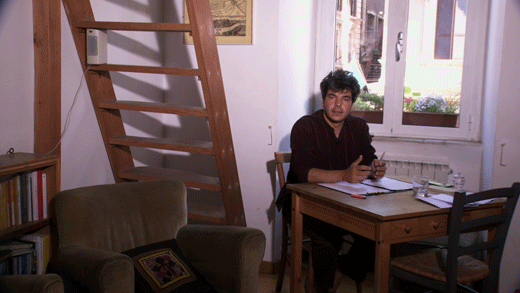
“If architecture is to begin at the base, then we have to turn our primary focus to the people. As can be seen in large-scale social housing construction; architects can not force people to live a certain way, no matter how good their intentions are.”
The Wounded Brick: Urban Planners / Sociologists
in alphabetical order
Hartmut Häussermann, Berlin, Germany
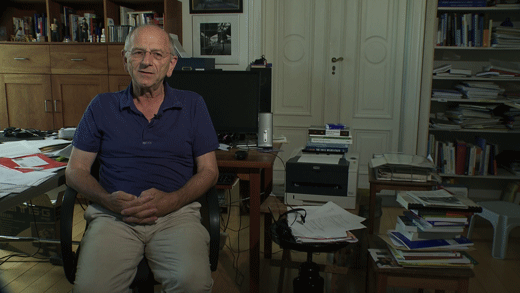
„ Who owns the city? Who can tell me: you’re living in the wrong way?“
Vezio de Lucia, Rome, Italy
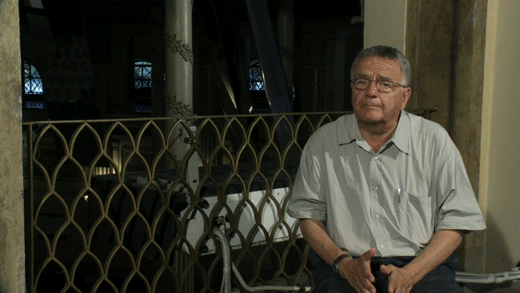
„There are no more cities, just an endless expanse of houses. In Italy the borders between cities and the countryside are disappearing. Houses are scattered everywhere.“
The Wounded Brick: Abruzzo Earthquake Victims
in alphabetical order
Gabriella Antonacci, Castelvecchio Calvisio
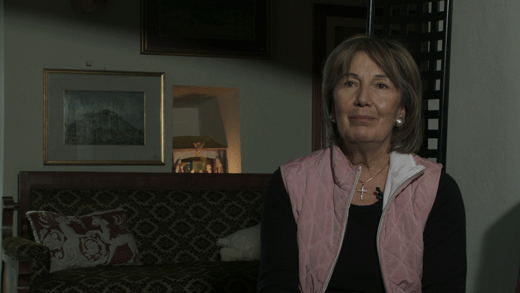
Gabriella and her husband Giuseppe have found refuge in her former parents’ home in Castelvecchio after the quake destroyed their property in L’Aquila. Gabriella suffers not only the painful loss of their house, which was once the center of their social life, but also the loss of “their” city of L’Aquila, which has become a ghost town. Unable to secure their future, many of her friends have moved away from the region. But the couple has decided to stay and fight for a future after the quake, and for the oncoming generations.
Italo Flammini, Castelvecchio Calvisio
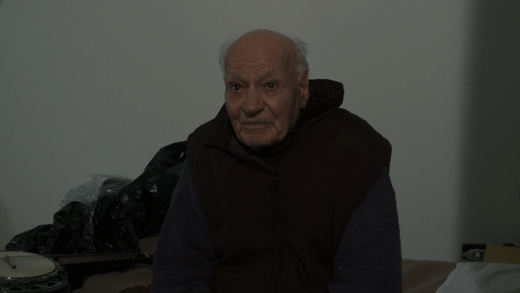
The over 90-year-old Italo was not at his home village Castelvecchio at the time of the quake, but with his son on the coast. Although he also lost his apartment during the earthquake and he could have lived comfortably with his son, he deliberately chose to go back to the destroyed Castelveccio. He now lives under primitive conditions in a rather small room in the old school building. During his eventful life he may have gotten around a lot, but this little village is and always has been his home. He points out cheerfully and proudly that he will never leave again.
Carlo Mangolini, L`Aquila
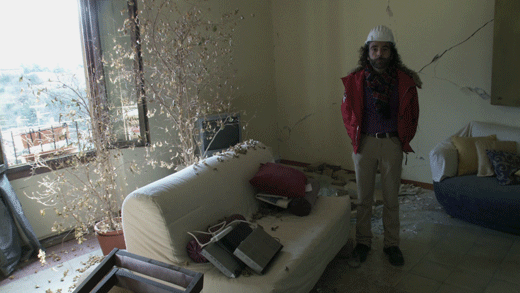
Since the earthquake, Carlo, a gallery owner from L’Aquila, „lives“ in a wooden hut in his parents’ garden. Under great emotional strain he takes us to his destroyed house and thus gives us an intimate glimpse into the heart of his former life. For him it’s like a punch in the stomach because facing the destroyed furniture and dishes makes him face the loss of his personal home and identity.
Antonio Massena, L`Aquila
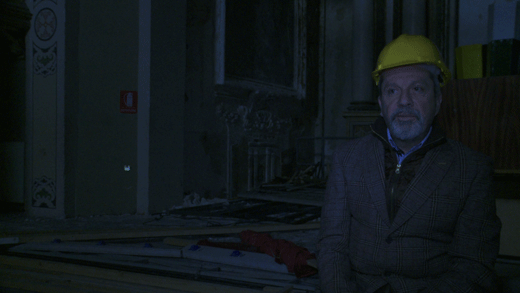
Antonio also has lost his home both artistically and professionally. The quake has destroyed the theatre that he founded 30 years ago and had built up with his whole heart and soul. Now he literally sits in the ruin of his existence and raises serious allegations against the city of L’Aquila and the government. Without an overall financing scheme- not only for short-term economic interests - but to provide new perspectives for the culture and the people of L’Aquila, there can be no future for the city and its people.
Giuseppe Santoro, Castelvecchio Calvisio
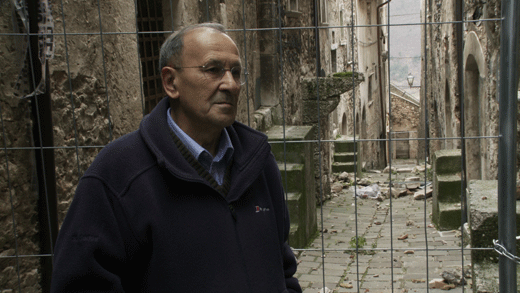
Gabriella’s husband is an architect. He has been personally and professionally connected to Castelvecchio for many years. During his studies, he explored this extraordinary medieval village, met his future wife Gabriella and witnessed the increasing rural exodus over the decades. Now, after the earthquake, he refuses to remain idle and helpless and is trying to give the destroyed village and the very last of its remaining inhabitants a new hope and life.
Fiorella Scacchitti and Ivano de Censo, Castelvecchio Calvisio
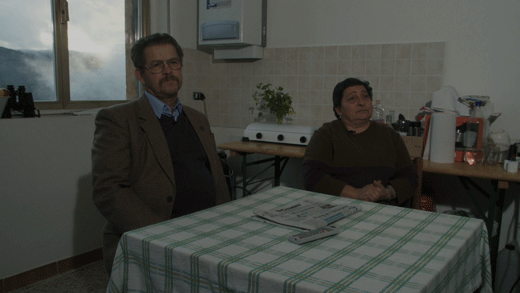
The retired couple Ivano and Fiorella also found shelter in the former school building. With great modesty, they accept their fate, hoping for a speedy return to their damaged house. Until then, they try to maintain their daily routines of everyday life the best that they can.
The Family del Grande, L`Aquila
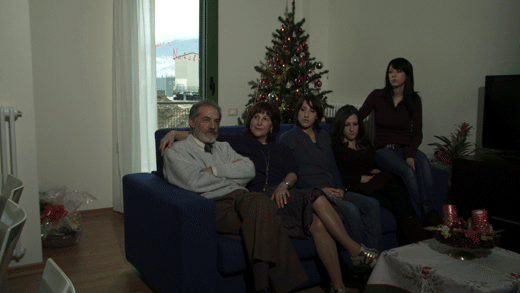
The Del Grande family now lives with four of their six children in one of the satellite towns that were built after the earthquake around L’Aquila. It is a temporary end to a nine-month odyssey through emergency and transitional shelters, far away from their home. Not only did each family member lose their daily routine, their friends and education, but the entire family has been torn apart through the individual allocation of the transitional shelters. Now that they are settled down for the first time in months, they try to put into words for us how painful the loss of their home and their new life in “exile” has been for each of them.
The Family Gualtieri, San Benedetto in Perillis
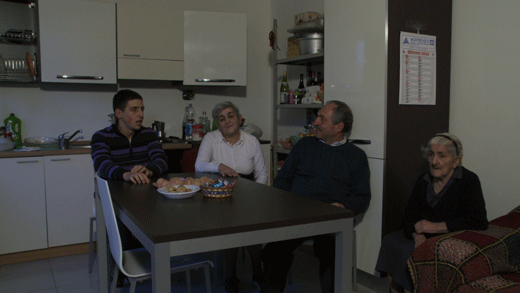
Giancaterino, the mayor of San Benedetto in Perillis, now lives with his wife, his son, and his mother-in-law in a MAP: a hastily erected wooden house on the edge of his destroyed home village. Although the family now has a much more comfortable apartment (central heating and a modern kitchen), the family told us that they would like nothing more than to return to their old, unrenovated house because it was simply their real home. Their unusual new surroundings have put great strain on the inner peace of the family. They feel that their life and their habits have been taken away from them. The personal area that each family member had in their old home is painfully missed. Despite the prohibition of the authorities, Giancaterino sneaks over to his old house once in a while and sits in the kitchen or works in the garden, just to get back the feeling of being “at home” for a short time. There he tells us with touching simplicity of his deep rootedness in the region, his village and his old house.
Action
If you like what we do support our work and our artistic mission. Join our network of interested individuals, friends, partners and supporters:
Get in touch with us: mediart01[at]mediart01.com
Share the project with your friends, communities and social networks.
We want to build an engaged, excited community following us—and whom we follow—and we love the dialogue and rapport:
